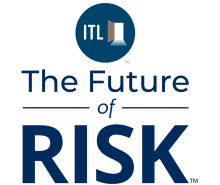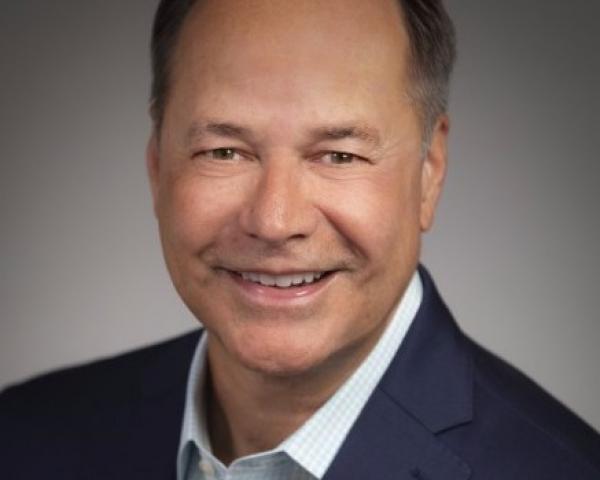Even as so much has changed so quickly, including the entire insurance, automotive and mobility ecosystem, market leaders and their long-time trusted partners are better positioned than ever to weather the storm, adapt and succeed.
The ecosystem includes auto insurers, agents, brokers, car manufacturers, dealers and the automotive aftermarket. The extended auto physical damage supply chain with which they all interact includes roadside, emergency response, towing and temporary rental car service providers. Related and interdependent segments include connected services, telematics-based and other IoT and sensor-based programs.
But driven by sudden and dramatic changes in socioeconomics, politics, technology, and consumer expectations, almost all of the historical financial models that applied for so long among the participants are suddenly unrealistic and unworkable. The relationships and partnerships, however, are more relevant than ever.
What all of this means is that an entirely new set of business models, relationships, products, risk management and support services need to be developed, negotiated, and implemented. No small feat! What appears to be friction emerging between the various ecosystem participants is actually evidence of this transformation evolving. Furthermore, consumers are experiencing a new normal when it comes to insurance – high premiums, less protection and caution about making claims for fear of surcharges or worse. Collaboration between claim ecosystem players, in particular, is more important than ever and is being put to the test.
Auto Insurance Economy
One of the bigger industry segments that best illustrates these challenges and also presents many important new opportunities is the $390 billion U.S. auto insurance segment. This "insurance economy" is composed of thousands of supply chain participants and industry trading partners serving a common customer base of about 215 million insured motorists who are involved in ~22 million auto accidents annually.
Since 2022, as inflation drove up costs for all participants, auto insurers were among the first to recognize the need for aggressive rate increases. Early warning signs emerged with steep increases in auto body repair labor rates due to widespread repair technician shortages similar to numerous other service industries in the post-COVID era. Auto insurance premiums have increased 49% since 2019, resulting in 57% of auto insurance customers shopping for new policies in 2024. These increases drove auto insurance policy shopping to unprecedented heights and increased the already stiff competition for market share. In fact, more than half (57%) of auto insurance customers have shopped for a new policy in the past year, the highest rate ever recorded by J.D. Power. Although rate increases are slowing, in 2025 they are still developing and being digested by consumers.
Inevitably, ecosystem participants also began to feel the pinch of increased costs of just about everything and started passing them up the supply chain, putting further pressure on all participants and ultimately reaching consumers.
Auto Physical Damage (APD) Ecosystem/Rental Car Coverage
The $250 billion auto physical damage ecosystem is a prime example of how symbiotic these segments have become. And one critical subset of this ecosystem - rental reimbursement coverage – is one that displays high relevancy and interdependency. It provides auto insurers, collision repairers, and policyholders with temporary transportation while accident and theft claims are being processed. Surprisingly, according to recently published 2025 U.S. Auto Insurance Trends Report by LexisNexis Risk Solutions, only ~ 40% of eligible auto policies carry this relatively inexpensive and high-value coverage, which becomes obvious whenever a driver must pay out-of-pocket for a rental vehicle. The average duration of these temporary rentals is currently ~16 days, and the average daily retail rate ~$61.50, totaling almost $1,000 out-of-pocket. Rental car coverage typically costs ~$30/year.
Total loss claims, which generate significant opportunities for lengthier replacement rentals have soared to 29% of claims in 2024 from only 17% in 2018, according to LexisNexis Risk Solutions. It says:
"Now with almost 30% of collision claims ending in a total loss, carriers need to place an even greater focus on speed and customer satisfaction in this process, especially because our research shows that approximately 40% of vehicles with full coverage (liability and physical damage) opted to purchase rental reimbursement coverage."
This rental car protection gap represents a particularly high-value opportunity for auto insurers, agents and brokers to educate policyholders on the value of this protection and differentiate their customer care and service levels from competitors. Rising rental costs are also a call to action for insurers to adjust daily policy limits to match new market norms.
Despite alternative modes of mobility, renting a car is essential during the repair process and a huge source of dissatisfaction expressed by policyholders when they learn so-called "full coverage" may not include this valuable protection. This scenario leads to poor claim experiences and often has downstream consequences in terms of customer retention rates.
Partnerships Matter More Than Ever
Recently, many of the same economic factors that caused auto insurers to raise premiums have begun to affect supply chain partners such as rental car companies. These include an aging car parc, tariffs and higher vehicle acquisition costs, OEM production constraints, advancing vehicle technologies, higher repair costs, and evolving global economic conditions.
Adding to rental companies' operating challenges is the marked reduction in claims filings, which depresses rental car transactions and revenue. In addition to raising their deductibles, many consumers have opted to remove rental reimbursement coverage to lower costs, further contributing to a decline in rental transactions.
BUSINESS MODEL OPPORTUNITIES
The changing marketplace also presents new opportunities in distribution. New channels such as direct-to-consumer, point of sale and embedded insurance are rapidly emerging with support from retailers seeking incremental revenues and customer engagement and digital-forward consumers.
Hyper-personalized, parametric and episodic insurance products are also meeting consumer appetites and demand and delivering a more dynamic and flexible customer experience.
PRODUCTS & SERVICES OPPORTUNITIES
Protection gaps have become much more visible as extreme weather events created unprecedented property damage, which exposed extensive lack of coverage. Insurance-to-value calculation based on historical loss data is no longer relevant. Carriers that can address and cure these gaps will be tomorrow's market leaders
The auto insurance market is out of sync. New products are needed now. Telematics, usage-based insurance and shared value programs are one good answe,r but the industry needs to address several related hurdles, including data ownership and control. Claim process designs must move from historical to real time to predictive in order to maximize potential.
In general, we need to encourage the industry to shift from a repair-and-replace to a predict-and-prevent mindset.
CLAIMS & TECHNOLOGY OPPORTUNITIES
A large number of obvious opportunities between ecosystem partners exist but have not been aggressively explored or adopted for a variety of reasons.
- Data privacy concerns need to be eliminated, and obvious opt in/out choice need to be addressed, paving the way to unleash the transformative power of telematics
- Misaligned business models, while sharing the very same customer base, have been a constant, and the problem is best assuaged with negotiated pricing agreements and balance of containing total cost of claims, shared
- Real-time accident management, emergency response, crash detection and e-FNOL could transform the auto insurance market and unleash compelling value and customer service but are minimally deployed
- Straight-through processing of claims remains a challenging but enticing design model, and platform providers integrated with cloud-based claims management systems may be getting closer to enabling it
- AI needs and deserves more careful, thoughtful exploration to unlock its seemingly unlimited potential
PARTNERSHIPS, COLLABORATION AND TRUST MATTER MORE THAN EVER
Recreating a relevant insurance economy will require all the trust and goodwill fostered by relationships over the years. Even in the midst of such extensive disruption, some values remain constant.









